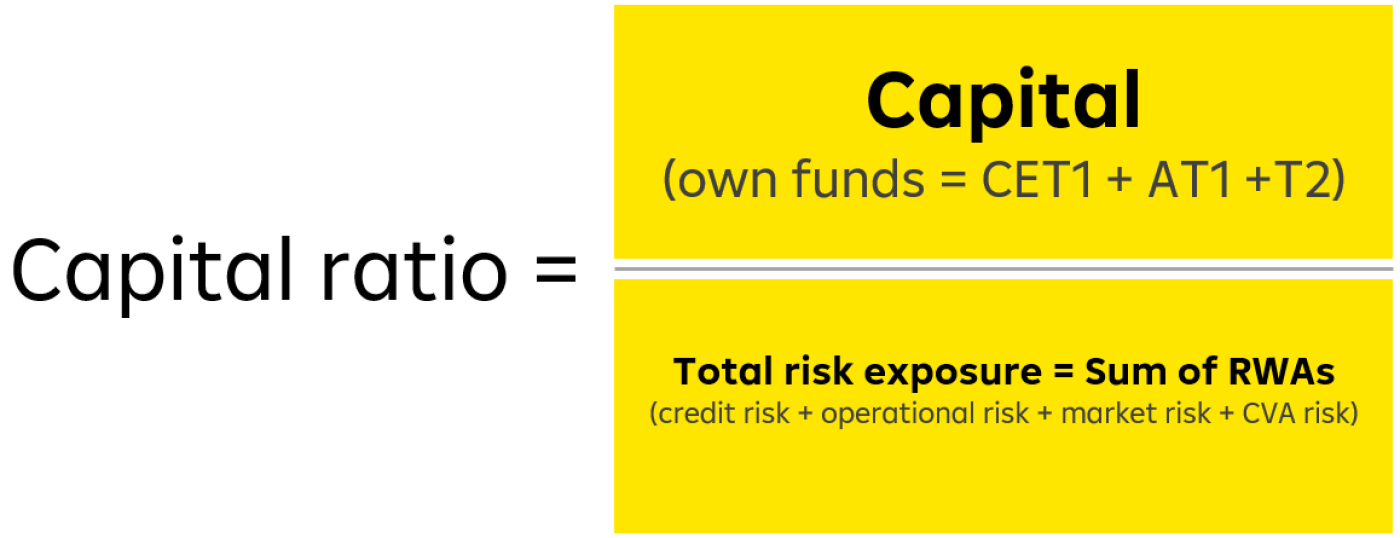
Minimum own funds requirements
Minimum own funds, regulatory capital or capital adequacy requirement are different terms for the same regulatory framework.
According to the Capital Requirements Regulation (CRR) framework (which is a European reflection of Basel III rules on capital measurements and standards), EU Regulatory agencies strive to ensure that financial institutions, banks and investment firms have sufficient capital to run their businesses and remain resilient when facing Credit risk, Operational risk, Market risk, Credit Valuation Adjustment Risk (CVA).
The following requirements regarding own funds must be met by credit institutions at all times, according to Article 92 CRR:
Tier 1: Common Equity Tier 1 (CET1) 4.5% + Additional Tier 1 Capital (AT1) 1,5 % = 6%
+ Tier 2: (T2)2% = 8%
+ individual capital buffer requirements under Capital Requirements Directive (CRD) in the specific country. (CCyB, systemic risk buffer, …)
Taking into consideration all the information above, the capital ratio formula can be calculated as follows:

You are asking how the RWAs (risk weighted assets) are calculated?
Let's take credit risk as an example. You, as a bank, lend EUR 100.000 to a customer. The standard risk weight for unsecured retail credit is 75%. That means you have to multiply EUR 100.000 by 75%. The result would be EUR 75.000 in risk-weighted assets, which is used to determine the minimum amount of assets you must hold to protect yourself from insolvency by adding up all risk-weighted assets in the denominator in the calculation above.
For inquiries please contact:
regulatory-advisory@rbinternational.com
RBI Regulatory Advisory
Raiffeisen Bank International AG | Member of RBI Group | Am Stadtpark 9, 1030 Vienna, Austria | Tel: +43 1 71707 - 5923